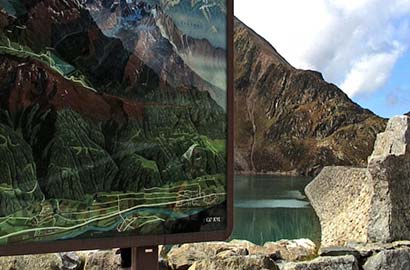Moving images are often read as “the truth”...
Dear Reader,
My name is Andrea Keiz, and I am a member of the Research Group of REFLEX Europe.
I am working in the field of video documentation of contemporary dance since 2000, producing documentations for archives, books, DVDs, online platforms and working processes. The materials are used for reflection, distribution, advertisement and archiving.
The first way to express myself is movement. To create something that lasts longer than the moment of movement, the use of images and video occur to be a good way. Writing is different to me. Although letters are images that create content - they have to be revised over and over in dialogue with others in order to hit the point I want to make. In the contrary to the range of interpretation of images, we tend to narrow down the possible reading of text to one way.
If I work with video as a documentation tool I am confronted as well with the fact that moving images are often read as “the truth” about something. But considering perspective, circumstances, personal and political interest, it is very soon clear that there is no objective documentation. The visual representation of a live act has several possible outcomes.
This guides me through my work in teaching on documentation.
The following thoughts might strike you as a dance might strike you – they might resonate with you – then leave you alone.
Thoughts that occur when I ask myself:
In which context do I write this?
What is my interest in this context?
Whom am I writing for?
Documentation:
Documentation is a perfect way for me to reflect on the work that I’m doing.
IDOCDE as a platform offers the possibility for these reflections to be shared.
Reflection, mirroring, I look at what I did. Reflection, to make sure that I am conscious about my development and the transmission of my work. Documentation is the perfect way to do so.
A very basic example for this is the exercise of camera choreographie (http://www.idocde.net/idocs/575). You look at a situation, you make a plan according to the circumstances, you follow your plan and you look at the result after. There will always be a moment where you perfectly fulfill your plan and those moments where you “failed” according to your plan. As an exercise you can do this over and over and diminish the gap between your imagination and the image. You will figure out that you sometimes need to take one step aside to find an interesting perspective.
Sharing:
In a time of constant information overload I have to think of those years when I used a handwritten notebook.
Sometimes I go back to those notebooks in order to reuse thoughts and exercises.
It feels like distillation. A lot of written words on the paper condensed in a memory that turns out to have the capacity to become an exercise, that I can use to transmit my ideas.
Since documentation is a common topic in the field, we produce a lot of documents on what we do. Writing, video and photo… In the realm of documentation we might share them already before the process of evaporation took place.
But maybe the material is just meant to feed back to myself?
Maybe it is at a point where I want it to share a specific question within a closed circle. How to decide what to share and with whom and when?
These are thoughts that I have when I think about IDOCDE and how a broad participation could make sense in a long run. How can we use the platform to support these different layers of documentation and needs for discussion?
This question offers a perfect transition to the theme of the next IDOCDE symposium. The Symposium "The Importance of Being [Un]Necessary - 2016"
The symposium will be the place where we discuss and exchange what is “[un]necessary”. On the question of documentation as well as on the question of the importance of dance as an art form.
And then again using IDOCDE to share the condensed and edited thoughts around “The Importance of Being Un(Necessary)”.
Andrea Keiz
28.02.2016
